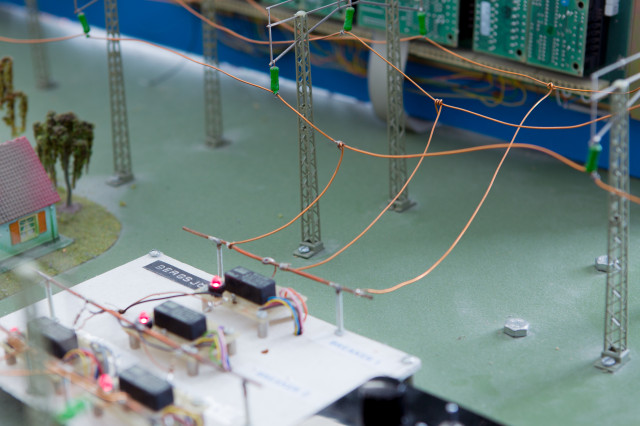- Charge, direct current and alternating current, voltage and power, electrical and magnetic field.
- Ohm’s and Kirchhoff’s laws.
- Analysis methods: Mesh and Nodal analysis.
- Networks theorem: superposition, Thévenin, Norton and Maximum power transfer theorem.
- Knowledge of components (R, L, C) and ideal transformer.
- Phasor notation. Mathematical operations with complex numbers.
- R-C, R-L and R-L-C circuits.
- Different types of diodes, transistors including some of their basic networks.
- Operational amplifier.
- Knowledge of measurement instruments (multimeters and oscilloscopes).
HE1200 Electrical Principals and Measurement 9.0 credits

Information per course offering
Choose semester and course offering to see current information and more about the course, such as course syllabus, study period, and application information.
Information for Autumn 2024 Start 28 Oct 2024 programme students
- Course location
KTH Flemingsberg
- Duration
- 28 Oct 2024 - 2 Jun 2025
- Periods
Autumn 2024: P2 (5.0 hp)
Spring 2025: P4 (4.0 hp)
- Pace of study
25%
- Application code
51146
- Form of study
Normal Daytime
- Language of instruction
Swedish
- Course memo
- Course memo is not published
- Number of places
Places are not limited
- Target group
- No information inserted
- Planned modular schedule
- [object Object]
- Schedule
- Part of programme
Contact
Elias Said, elias.said@sth.kth.se
Course syllabus as PDF
Please note: all information from the Course syllabus is available on this page in an accessible format.
Course syllabus HE1200 (Autumn 2019–)Content and learning outcomes
Course contents
Intended learning outcomes
0BLearning outcomes
The main objective is to provide knowledge of electrical components and their interaction in electrical networks, knowledge of some methods for calculating the dependence of time and frequency for electrical circuits. The course will also provide knowledge about electrical instruments and common methods for measuring and training in using computer aid for simulating and measuring in electrical circuits.
After completion of the course the student should be able to:
· Explain the basic electrical and magnetic concepts.
· Apply basic electrical network theory in order to calculate direct current networks as well as alternate current networks.
· Calculate the time constant and compute its effect in capacitive and inductive circuits, especially at closing and opening in DC networks.
· Use programs for circuit simulation for any electrical circuit and simulate its function with respect to currents, voltages, pulse response, frequency response and time dependence.
· Describe passive components and explain the characteristics and uses of passive components and electrical networks.
· Explain the function of the ideal operational amplifier, and analyze of basic circuits with operational amplifiers.
· Explain the characteristics of diodes, transistors.
· Define and calculate gain, input and output impedances for amplifiers based on operational amplifiers and transistors.
· Determine transfer function for frequency dependent amplifier circuits, draw bode-plots (magnitude and phase).
· Handle electrical generators and measuring instruments such as voltage sources, function generators, multi meters and oscilloscopes.
Literature and preparations
Specific prerequisites
Basic knowledge in mathematics (algebra, matrices, equation systems, differential equations, and complex numbers).
Equipment
Literature
-
Boylestad, Introductory Circuit Analysis,13:e upplagan, Pearson New International Edition, ISBN 978-1-292-09895-1, gäller för del A
-
Analog elektronik, Molin, Upplaga: 2, Förlag: Studentlitteratur År: 2009, ISBN: 978-91-44-05367-7, gäller för del B
Examination and completion
If the course is discontinued, students may request to be examined during the following two academic years.
Grading scale
Examination
- LABA - Lab Work, 4.0 credits, grading scale: P, F
- TENA - Examination, 3.0 credits, grading scale: A, B, C, D, E, FX, F
- TENB - Examination, 2.0 credits, grading scale: A, B, C, D, E, FX, F
Based on recommendation from KTH’s coordinator for disabilities, the examiner will decide how to adapt an examination for students with documented disability.
The examiner may apply another examination format when re-examining individual students.
Opportunity to complete the requirements via supplementary examination
Opportunity to raise an approved grade via renewed examination
Examiner
Ethical approach
- All members of a group are responsible for the group's work.
- In any assessment, every student shall honestly disclose any help received and sources used.
- In an oral assessment, every student shall be able to present and answer questions about the entire assignment and solution.